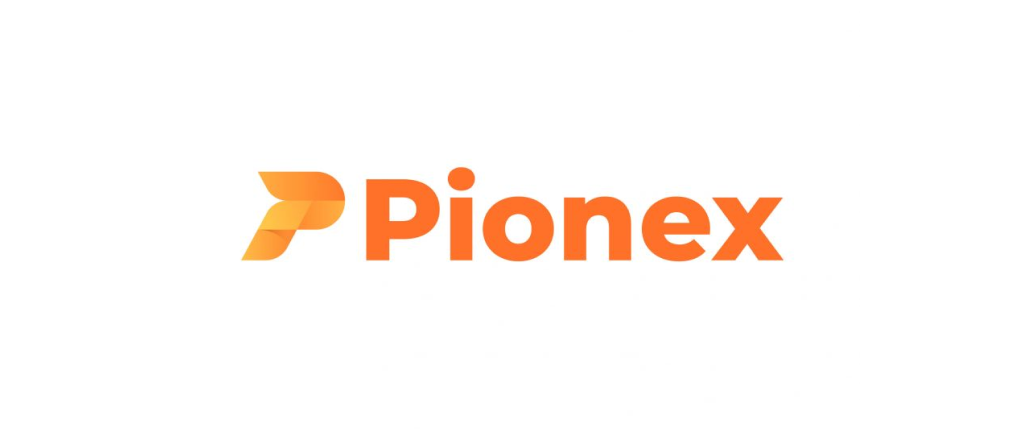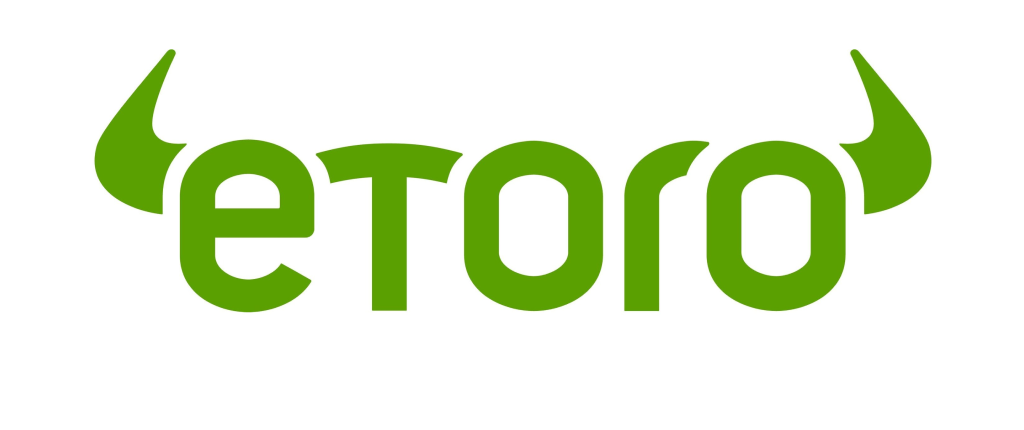Cryptocurrencies are now deeply established in our lives, whether we like them or not. It is now impossible to find someone who has not heard about bitcoin. And, of course, many individuals consider how to profit from it. The most apparent solution is to start your own crypto exchange where consumers may purchase bitcoin or swap it for another. It turns out that this isn’t all that tough.
The temptation to trade cryptocurrencies is growing in the current financial environment. As a result, an increasing number of people seek to start their own cryptocurrency exchange. Let’s go over how to start a crypto exchange step by step. Binance, which was launched in 2017, for instance, anticipates a profit of roughly $1 billion by the end of the year. What factors should be considered before developing a crypto “exchange platform”?
Different crypto exchanges
Today, cryptocurrency is well entrenched in the technological world. As a result, many people who were able to see its benefits resigned from their day jobs and committed themselves to trade. Trading on stock exchanges was once restricted to a small group of people, brokers who buried themselves in stacks of documents and tracked the price movement of certain assets. This activity’s whole process has nearly totally transferred to the World Wide Web. Furthermore, it is now accessible to the majority of network users. Anyone may now become a cryptocurrency trader, regardless of their degree of education or beginning funds.
Types of crypto exchanges
The main and most common type of cryptocurrency today is bitcoin. As soon as it appeared and gained a certain popularity, many of its derivatives arose – forks that differ from the original in the meaning of mathematical calculations. Due to the wide variety of “assets”, cryptocurrency exchanges have formed on the platforms on which forks can be placed. But otherwise, virtual currency exchanges are divided into two types:
- Resources where users can exchange crypto for fiat currency;
- Platforms that allow the exchange of cryptocurrencies only for other cryptocurrencies.
As for the first option, it is attractive to users as a source of income. Trading provides for the possibility of conducting speculative operations in the market, withdrawing profits as a real currency, which is highly volatile. The exchange of one currency for another will be beneficial if it is used in the future. But, as experts assure us, this is all nothing more than theoretical data. In order to be convinced of the effectiveness of a particular method, there must be practice. This means that before you engage in trading, you need to carefully analyze the work of today’s popular exchanges.
Decide on jurisdiction

The major consideration for beginner crypto exchange traders should be selecting a nation with a suitable regulatory structure. Many countries are continuously looking for the best legislative arrangements. A significant element is taxation, which will determine the ultimate profit. Puerto Rico, the Cayman Islands, Mauritius, Malta, Australia, Switzerland, and Japan are the most favorable in legal terms today.
Gather all required documents
You must examine all regulatory requirements after settling on a registration location. The number of licenses and permissions needed will be decided by the legal norms of the nation. It is preferable to transfer this responsibility to local attorneys who are familiar with the appropriate legislation. KYC and AML are required in the great majority of regions.
Purchase or rental of server equipment
There are two main ways to deal with servers: buy them or rent them. The purchase will cost at least several thousand dollars, but the equipment will remain on the property. Accommodation is several times cheaper, but for owners of financial resources, no one else should have access to the equipment.
Develop or buy software
The main thing is to choose the right software. Depending on the supplier, it will cost several tens of thousands of dollars. There are also ready-made SaaS solutions that allow you to launch an exchange in two weeks. They cost less, but in this case, the site does not belong to you. You do not control it.
Providers of such solutions deploy exchanges on their servers and then require payment for each transaction for any change. Such an exchange is more difficult to promote. In essence, the owner has to compete with other exchanges that the provider has also deployed on its server. As a result, it costs more than developing a new solution.
Start building partnerships with financial organizations
Transfers will be possible via processing facilities or banks. Please remember that not all financial institutions support cryptocurrencies and their free circulation. A bank’s primary needs are transfer speed and security.
Protection and security; audience selection
An important requirement for servers is to provide protection against DDOS attacks, as well as having an excellent firewall on the server. The server must provide protection against unauthorized access and notify the administrator of any suspicious activity on the crypto exchange platform. The presence of two-factor authentication is required. It is also necessary that the server has enough space to organize regular backups and storage of users’ log files.
You can start a cryptocurrency exchange with many currencies or confine yourself to a single state. After you have fixed the currencies, you must launch an advertising campaign that includes opinion leaders.
24/7 customer support

There is nothing worse for a crypto exchange service than leaving customers without technical support. You must supervise:
- filing matters;
- transaction failures;
- the fight against money laundering;
- software problems.
Provide liquidity

It is an important part of the existence of a cryptocurrency exchange business. The trading API will come to the rescue — a set of ready-made functions provided by the exchange platform for use in external programs. The public API collects data on the state of the markets, trading volume, etc. A trading robot will connect your project to a major crypto exchange platform and establish exchange operations.
Commission size

The commission for transactions is a maximum of 0.5% of the amount, but it is usually 0.1-0.2%. Verified exchanges have an average daily turnover of around $10 million. The owner will earn around $10,000 a day in commission alone.
How much does it cost to open a cryptocurrency exchange?

After investigating the largest cryptocurrency exchange systems, it was discovered that their inexact cost was around $300,000, with the source code costing up to $500,000. You will need $1 million in capital to launch an international bitcoin exchange from the beginning.
This will have to add the maintenance of the software itself for the cryptocurrency exchange, which ranges from $200 to $2500, depending on the platform, per month.
You will also need to consider licenses and regulatory documents to go through various exchange procedures in different countries. This cost item is an important element since it can vary from 20 to 50 thousand dollars depending on the country.
It should be highlighted that several of the world’s top bitcoin exchanges lack worldwide licensing. Bittrex, Bitfinex, Kraken, and Binance, for example, do not have worldwide licenses, yet their trading volumes are among the highest. This demonstrates that clients worry more about your reputation and the quality of your platform than they do about your license. Administration regulators and banks, on the other hand, are becoming concerned. Japan, for example, has sanctioned seven crypto exchanges and is taking steps to enforce the regulations against anybody trading on the crypto market. Finally, the situation might vary from day to day.
The most expensive part of opening a cryptocurrency exchange is the authorized capital, which can range from several million US dollars to an unlimited amount depending on the jurisdiction.
Promoting your business is perhaps the hardest and most expensive part of budgeting. You opened a cryptocurrency exchange. What next?
Once the exchange is already open and you have launched the first announcement and received the first customers, you will have to provide the necessary liquidity. Since there is a lot of competition in the crypto exchange market, exchanges with lots of liquidity always win. It is for this reason that the Binance crypto exchange has gained such popularity.
What Lurks Under the Threat of Insufficient Liquidity on the Stock Exchange
The most serious risk of insufficient liquidity on the exchange is the inability to conduct large operations; thus, all crypto exchanges with sufficient liquidity will win because these operations will be carried out precisely through these exchanges, while small exchanges with liquidity will remain unused. As a result, the value of cryptocurrencies will vary regularly between small and large exchanges. Small changes will go unnoticed.
In the modern cryptocurrency market, most trading on the stock exchange is done for speculative purposes and not for the crypto exchange of commodities. For speculators, the exchange rate is very important.
Creation of intra-exchange cryptocurrency
Many contemporary exchanges now have their own cryptocurrency that may be used for a number of reasons. The major function of internal cryptocurrency on the exchange is to cover the costs of opening trades and other exchange fees incurred during trading operations. Because utilizing an internal cryptocurrency will result in lower costs than using dollars or another currency. As a consequence, most traders choose to keep some of their funds in internal cryptocurrency, which is always convertible, secure, and highly usable.
Develop a customer growth and retention strategy

Every cryptocurrency exchange’s main goal and benefit is liquidity. We’ve previously talked about it, but I’d want to clarify a few issues. Some software suppliers may also supply your cryptocurrency exchange with an additional script or program that, upon launch, quickly transfers liquidity from big crypto exchanges to your platform, filling order books and generating exchange activity to attract new customers. Developing a comprehensive marketing plan before launching your exchange is essential, including setting up a rigorous marketing budget to track expenses and estimate return on investment. What you should pay attention to:
1.Creation of corporate identity
2.Pay-per-click campaigns to increase your social media presence
3.Dissemination of press releases on cryptographic media
4.Generation of paid leads through a database service
5.Blog content to generate SEO
6.Plan conferences and events to boost your brand awareness
It is also critical to give great assistance. We live in a customer-centric corporate world where customers have an abundance of alternatives. However, by giving excellent support and service, you may encourage them to remain loyal and with you.
You must have a custodial/cash account to process customer deposits and withdrawals in local currency if you want to provide local currency pairings. Create a bank account where your clients may deposit their money.
If you want to start a cryptocurrency exchange business, you need to do it now. Competition in the market is intensifying, it will soon be saturated, and there will be no room for new entrants. So, start brainstorming and come up with a business plan to create a cryptocurrency exchange.
How to buy cryptocurrencies and how to trade them?
Traders want to acquire digital assets and exchange them with each other. For this, the industry needs crypto exchanges, as they help users buy and sell cryptocurrencies. Moreover, some crypto exchanges integrate fiat gateways within their functionality. This means that you can use your bank account or credit card to purchase crypto assets.
Different types of crypto exchanges take different approaches to run their business. Some platforms attract clients with a simple and convenient interface, others with low trading fees, others train users from scratch, while others are aimed at professional traders.
Let’s take a look at the different types of platforms that allow you to buy and trade cryptocurrencies.
Classic exchanges
Such cryptocurrency exchanges operate on the principle of conventional stock exchanges. You can use your fiat money or cryptocurrency to exchange assets by placing:
a market order, which is instantly matched with the orders of buyers and sellers that are already in the order book and thus filled. Limit order, which will fall into the order book and will be displayed in it until it is executed.
P2P cryptocurrency exchanges
This type of exchange works not only with cryptocurrencies. P2P exchanges are also very popular in traditional markets. They are presented in the form of over-the-counter (English Over-the-Counter, or OTC) platforms where you sell and buy assets from other individuals or companies but on confidential terms. Here you will not find a glass of orders, and you will not notice a direct impact on the price of the underlying asset. In the crypto industry, an example of such a platform is LocalBitcoins.com, where demand meets supply through peer-to-peer trading (from person to person). In most cases, this process takes place without the participation of intermediaries, but some OTC sites charge a commission for mediation.
OTC platforms mainly work with large volumes of cryptocurrency orders, which could affect the price of the traded asset when trading on classic exchanges. Usually, their services are used by large venture capital companies, hedge funds, and, importantly, cryptocurrency miners.
Brokers and CFD Trading
The broker helps buyers and sellers find counterparties for trading and exchange. It is also worth noting that the broker itself can act as a counterparty. The intermediary (broker) will take a commission for their services but will ensure fair and safe trading for both parties. The broker can also give users the opportunity to trade CFD instruments. This means that you can buy and sell almost all assets using this type of instrument, from stocks to cryptocurrencies. Unlike the classic exchange process carried out on the exchange, CFD trading does not involve the physical delivery of the traded asset.
Derivative exchanges
What is a derivatives exchange, and what opportunities can it offer? In the derivatives market, you trade the price of the underlying asset, so you can take advantage of various benefits to significantly increase your profits if you trade successfully. One of the biggest advantages of derivatives exchanges is that you can trade with a lot of leverage. As a rule, these trading platforms use such financial instruments as futures or perpetual swaps.
Types of cryptocurrency exchanges
Centralized exchanges
Centralized exchanges (CEX) are the most famous and traditional exchanges in the cryptocurrency industry. Here you can trade both cryptocurrencies and fiat money. Also, one of the features of such sites is that they are under the centralized management of the companies they own. Here you can use the order book, and on some advanced exchanges, you can find tools for technical analysis of the market.
The biggest advantage of such an exchange is that CEX is easy to use and has powerful UI and UX, as well as speed. In order to start trading, you just need to register with your email and write down your password.
As a rule, the largest exchanges have not only a good reputation but also high trading volumes and liquidity. Consequently, the trading spread of these exchanges is not as large as other types of exchanges, which we will discuss in the following sections. Centralized exchanges usually offer their clients support, various trading pairs and gateways for receiving and withdrawing, as well as additional services, such as staking, storage options, IEO (Initial Exchange Offer, or initial exchange offering) or DeFi (Decentralized Finance, or decentralized finance.
Decentralized exchanges
Decentralized Exchanges (DEXs) are an alternative to CEX. Here you don’t have to trust your assets to someone else. Unlike traditional CEXs, on such trading platforms, transactions and trading are automated using smart contracts and decentralized applications.
This type of crypto exchange is much safer, as a well-written smart contract will not allow hackers to hack it. Since Ethereum is the most advanced blockchain with the most tokens (ERC-20 tokens), most decentralized exchanges run on it and its smart contracts. Because of this, you won’t be able to trade Bitcoin on most of these exchanges. This problem, problem will probably be solved with the introduction of operationally compatible platforms at DEFI, such as Polkadot or Cosmos. With their use, restrictions on trade will be less.
DEXs cannot be shut down by any government or regulator as no organization is responsible for them. But this decentralization comes at a price. These are low trading volume, little liquidity, slower transaction speeds, and poor UI, making these exchanges harder to work with.
Also, the differences between decentralized and centralized crypto exchanges include the fact that some DEXs rely on experienced users. For example, they do not have support services, and they do not use fiat gateways, unlike CEX.
Binance DEX and Uniswap are some of the most famous decentralized exchanges.
Hybrid cryptocurrency exchanges
What is a hybrid cryptocurrency exchange? Simply put, this is an exchange that includes the benefits of both CEX and DEX. As centralized exchanges, they offer high transaction speeds, as well as security due to the fact that you remain the owner of the private key, which is what decentralized exchanges stand out for.
Hybrid exchanges are a new generation of cryptocurrency trading platforms that are still in development. The most popular hybrid exchanges are Nash and Qurrex.
Overview of popular crypto exchanges
Poloniex

Founded in 2014 by Tristan D’Agosta, Poloniex is an American crypto exchange that has risen through the ranks to become one of the twenty most popular crypto exchanges in the world, with a daily trading volume of over $160 million. Based in San Francisco, California, Poloniex is not available to people residing in the United States but can be used in various other locations, including the United Kingdom, France, Japan, and Canada.
Poloniex has a lot of positive aspects. Its wide range of supported currencies, staking possibilities, and rewards center all complement one of the platform’s strongest points: its low fees. Poloniex now charges a 0.125 % maker or taker fee and does not require deposits. This means you may buy and sell cryptos on the site without losing a substantial portion of your gains or incurring exorbitant transaction costs.
Kraken

Ranked among the firsts in trading platforms worldwide, Kraken started out as a US Bitcoin and Litecoin exchange (as well as a platform for trading Euros). Today, it supports a huge list of different cryptocurrencies, from Ethereum to Aave. There are many trading pairs, staking coins, and funding options available on Kraken, and its buy and sell fees make it a top crypto exchange.
At the moment, Kraken only charges a maker fee of 0.16% and a taker fee of 0.26%. Taker fees are often higher than maker fees since a taker will be withdrawing liquidity from an exchange, which is the opposite of what the exchange wants to generate profit. However, these support fees are still reasonable compared to other crypto exchanges.
Binance

Sitting comfortably as the most popular exchange in the world, Binance is the favorite of thousands of crypto buyers and sellers, and for a good reason. Not only is Binance available in over 180 countries around the world, but its fees are more than friendly.
With a maker and taker fee of just 0.1%, Binance makes buying and selling crypto affordable for anyone who wants it. On top of that, Binance does not charge stake fees and does not charge deposits or withdrawals! Overall, it’s a solid option for all things crypto and won’t let you face frustrating charges on your profits or rewards.
Pionex

Pionex is a cryptocurrency exchange that was created in 2019. However, its market debut has not hampered its development as an international exchange. Pionex’s range of handy trading robots, which enable users to trade assets, auto-invest in tokens, and more, is one of its most distinguishing characteristics. But Pionex’s robots aren’t its only appealing feature.
Another great thing about Pionex is its incredibly low maker and taker fees. Currently, both fees are only 0.05%, which is considerably lower than many other popular crypto exchanges. On top of that, Pionex does not charge for deposits, although there are flat fees for withdrawals which differ per coin.
eToro

eToro, founded in 2007, is an Israeli brokerage that offers a diverse and reputable crypto exchange to residents of 44 US states (residents of New York, Delaware, Hawaii, Minnesota, Nevada and Tennessee cannot currently use the service). Users may use eToro to purchase and sell cryptocurrencies such as Bitcoin, Ethereum, and Stellar. It also features excellent staking possibilities for anyone looking to make passive money with their cryptocurrency.
So how does it look like crypto exchange fees appear? In terms of maker and taker fees, eToro does not charge any. However, this does not mean that trading on eToro is completely free. The platform charges a spread fee of 0.75%, which is basically another way exchanges can charge for trades. Additionally, eToro does not charge any deposit or withdrawal fees, which makes transferring your money to or from the platform much more enjoyable.










